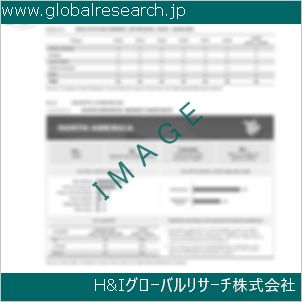Table of Contents
1 Industry Overview of Triethylaluminum
1.1 Definition and Specifications of Triethylaluminum
1.1.1 Definition of Triethylaluminum
1.1.2 Specifications of Triethylaluminum
1.2 Classification of Triethylaluminum
1.3 Applications of Triethylaluminum
1.3.1 Nuclear Application
1.3.2 Non-Nuclear Application
1.4 Industry Chain Structure of Triethylaluminum
1.5 Industry Overview and Major Regions Status of Triethylaluminum
1.5.1 Industry Overview of Triethylaluminum
1.5.2 Global Major Regions Status of Triethylaluminum
1.6 Industry Policy Analysis of Triethylaluminum
1.7 Industry News Analysis of Triethylaluminum
2 Manufacturing Cost Structure Analysis of Triethylaluminum
2.1 Raw Material Suppliers and Price Analysis of Triethylaluminum
2.2 Equipment Suppliers and Price Analysis of Triethylaluminum
2.3 Labor Cost Analysis of Triethylaluminum
2.4 Other Costs Analysis of Triethylaluminum
2.5 Manufacturing Cost Structure Analysis of Triethylaluminum
2.6 Manufacturing Process Analysis of Triethylaluminum
3 Technical Data and Manufacturing Plants Analysis of Triethylaluminum
3.1 Capacity and Commercial Production Date of Global Triethylaluminum Major Manufacturers in 2023
3.2 Manufacturing Plants Distribution of Global Triethylaluminum Major Manufacturers in 2023
3.3 R&D Status and Technology Source of Global Triethylaluminum Major Manufacturers in 2023
3.4 Raw Materials Sources Analysis of Global Triethylaluminum Major Manufacturers in 2023
4 Capacity, Production and Revenue Analysis of Triethylaluminum by Regions, Types and Manufacturers
4.1 Global Capacity, Production and Revenue of Triethylaluminum by Regions 2019-2024
4.2 Global and Major Regions Capacity, Production, Revenue and Growth Rate of Triethylaluminum 2019-2024
4.3 Global Capacity, Production and Revenue of Triethylaluminum by Types 2019-2024
4.4 Global Capacity, Production and Revenue of Triethylaluminum by Manufacturers 2019-2024
5 Price, Cost, Gross and Gross Margin Analysis of Triethylaluminum by Regions, Types and Manufacturers
5.1 Price, Cost, Gross and Gross Margin Analysis of Triethylaluminum by Regions 2019-2024
5.2 Price, Cost, Gross and Gross Margin Analysis of Triethylaluminum by Types 2019-2024
5.3 Price, Cost, Gross and Gross Margin Analysis of Triethylaluminum by Manufacturers 2019-2024
6 Consumption Volume, Consumption Value and Sale Price Analysis of Triethylaluminum by Regions, Types and Applications
6.1 Global Consumption Volume and Consumption Value of Triethylaluminum by Regions 2019-2024
6.2 Global and Major Regions Consumption Volume, Consumption Value and Growth Rate of Triethylaluminum 2019-2024
6.3 Global Consumption Volume and Consumption Value of Triethylaluminum by Types 2019-2024
6.4 Global Consumption Volume and Consumption Value of Triethylaluminum by Applications 2019-2024
6.5 Sale Price of Triethylaluminum by Regions 2019-2024
6.6 Sale Price of Triethylaluminum by Types 2019-2024
6.7 Sale Price of Triethylaluminum by Applications 2019-2024
6.8 Market Share Analysis of Triethylaluminum by Different Sale Price Levels
7 Supply, Import, Export and Consumption Analysis of Triethylaluminum
7.1 Supply, Consumption and Gap of Triethylaluminum 2019-2024
7.2 Global Capacity, Production, Price, Cost, Revenue, Supply, Import, Export and Consumption of Triethylaluminum 2019-2024
7.3 USA Capacity, Production, Price, Cost, Revenue, Supply, Import, Export and Consumption of Triethylaluminum 2019-2024
7.4 EU Capacity, Production, Price, Cost, Revenue, Supply, Import, Export and Consumption of Triethylaluminum 2019-2024
7.5 China Capacity, Production, Price, Cost, Revenue, Supply, Import, Export and Consumption of Triethylaluminum 2019-2024
7.6 Japan Capacity, Production, Price, Cost, Revenue, Supply, Import, Export and Consumption of Triethylaluminum 2019-2024
8 Major Manufacturers Analysis of Triethylaluminum
8.1 Manufacturer One
8.1.1 Company Profile
8.1.2 Product Picture and Specifications
8.1.2.1 Type I
8.1.2.2 Type II
8.1.2.3 Type III
8.1.3 Capacity, Production, Price, Cost, Gross and Revenue
8.1.4 Contact Information
8.2 Manufacturer Two
8.2.1 Company Profile
8.2.2 Product Picture and Specifications
8.2.2.1 Type I
8.2.2.2 Type II
8.2.2.3 Type III
8.2.3 Capacity, Production, Price, Cost, Gross and Revenue
8.2.4 Contact Information
8.3 Manufacturer Three
8.3.1 Company Profile
8.3.2 Product Picture and Specifications
8.3.2.1 Type I
8.3.2.2 Type II
8.3.2.3 Type III
8.3.3 Capacity, Production, Price, Cost, Gross and Revenue
8.3.4 Contact Information
8.4 Manufacturer Four
8.4.1 Company Profile
8.4.2 Product Picture and Specifications
8.4.2.1 Type I
8.4.2.2 Type II
8.4.2.3 Type III
8.4.3 Capacity, Production, Price, Cost, Gross and Revenue
8.4.4 Contact Information
8.5 Manufacturer Five
8.5.1 Company Profile
8.5.2 Product Picture and Specifications
8.5.2.1 Type I
8.5.2.2 Type II
8.5.2.3 Type III
8.5.3 Capacity, Production, Price, Cost, Gross and Revenue
8.5.4 Contact Information
…
9 Marketing Trader or Distributor Analysis of Triethylaluminum
9.1 Marketing Channels Status of Triethylaluminum
9.2 Traders or Distributors with Contact Information of Triethylaluminum by Regions
9.3 Ex-work Price, Channel Price and End Buyer Price Analysis of Triethylaluminum
9.4 Regional Import, Export and Trade Analysis of Triethylaluminum
10 Industry Chain Analysis of Triethylaluminum
10.1 Upstream Major Raw Materials Suppliers Analysis of Triethylaluminum
10.1.1 Major Raw Materials Suppliers with Contact Information Analysis of Triethylaluminum
10.1.2 Major Raw Materials Suppliers with Supply Volume Analysis of Triethylaluminum by Regions
10.2 Upstream Major Equipment Suppliers Analysis of Triethylaluminum
10.2.1 Major Equipment Suppliers with Contact Information Analysis of Triethylaluminum
10.2.2 Major Equipment Suppliers with Product Pictures Analysis of Triethylaluminum by Regions
10.3 Downstream Major Consumers Analysis of Triethylaluminum
10.3.1 Major Consumers with Contact Information Analysis of Triethylaluminum
10.3.2 Major Consumers with Consumption Volume Analysis of Triethylaluminum by Regions
10.4 Supply Chain Relationship Analysis of Triethylaluminum
11 Development Trend of Analysis of Triethylaluminum
11.1 Capacity, Production and Revenue Forecast of Triethylaluminum by Regions and Types
11.1.1 Global Capacity, Production and Revenue of Triethylaluminum by Regions 2024-2029
11.1.2 Global and Major Regions Capacity, Production, Revenue and Growth Rate of Triethylaluminum 2024-2029
11.1.3 Global Capacity, Production and Revenue of Triethylaluminum by Types 2024-2029
11.2 Consumption Volume and Consumption Value Forecast of Triethylaluminum by Regions, Types and Applications
11.2.1 Global Consumption Volume and Consumption Value of Triethylaluminum by Regions 2024-2029
11.2.2 Global and Major Regions Consumption Volume, Consumption Value and Growth Rate of Triethylaluminum 2024-2029
11.2.3 Global Consumption Volume and Consumption Value of Triethylaluminum by Types 2024-2029
11.2.4 Global Consumption Volume and Consumption Value of Triethylaluminum by Applications 2024-2029
11.3 Supply, Import, Export and Consumption Forecast of Triethylaluminum
11.3.1 Supply, Consumption and Gap of Triethylaluminum 2024-2029
11.3.2 Global Capacity, Production, Price, Cost, Revenue, Supply, Import, Export and Consumption of Triethylaluminum 2024-2029
11.3.3 USA Capacity, Production, Price, Cost, Revenue, Supply, Import, Export and Consumption of Triethylaluminum 2024-2029
11.3.4 EU Capacity, Production, Price, Cost, Revenue, Supply, Import, Export and Consumption of Triethylaluminum 2024-2029
11.3.5 China Capacity, Production, Price, Cost, Revenue, Supply, Import, Export and Consumption of Triethylaluminum 2024-2029
11.3.6 Japan Capacity, Production, Price, Cost, Revenue, Supply, Import, Export and Consumption of Triethylaluminum 2024-2029
12 New Project Investment Feasibility Analysis of Triethylaluminum
12.1 New Project SWOT Analysis of Triethylaluminum
12.2 New Project Investment Feasibility Analysis of Triethylaluminum
13 Conclusion of the Global Triethylaluminum (CAS 97-93-8) Industry 2024 Market Research Report
| ※参考情報 トリエチルアルミニウム(CAS 97-93-8)は、有機金属化合物の一種で、アルミニウムとエチル基が結合した構造を持つ化合物です。化学式は Al(C2H5)3 であり、無色の液体として存在します。トリエチルアルミニウムは、高い反応性を持ち、特に湿気に対して敏感です。この化合物は、多くの工業プロセスにおいて重要な役割を果たしています。 トリエチルアルミニウムの主な特徴として、高いアルカリ性と還元性が挙げられます。これは、アルミニウム原子が給電子剤として機能し、他の化合物との反応を促進するためです。また、気体中の水分と激しく反応し、非常に熱を発生するため、取り扱いには十分な注意が必要です。酸素や水分と接触すると、自発的に発火するリスクもあるため、厳重に管理された環境での使用が求められます。 種類としては、トリエチルアルミニウム以外にも様々なアルミニウムアルキル化合物が存在します。これらは一般的に、異なるアルキル基を持っており、反応性や特性が異なるため、用途に応じて使い分けられます。トリエチルアルミニウムは、特に重合反応や触媒としての使用が多く見られます。 用途の面では、トリエチルアルミニウムは主にポリマーの合成に利用されます。特に、ジエン重合や共重合反応において、触媒として作用します。これにより、様々な種類の合成樹脂やゴムが製造され、これらの材料は自動車産業や電子機器、建材など、多岐にわたる分野での応用が期待されています。また、トリエチルアルミニウムは、無機化合物との相互作用により、貴金属触媒と組み合わせて使用されることもあります。このように、反応性と多様な用途により、トリエチルアルミニウムは化学産業において欠かせない化合物となっています。 さらに、関連技術としては、トリエチルアルミニウムを利用した触媒系の開発が進んでいます。これにより、より効率的で環境に優しいプロセスが実現されつつあり、持続可能な化学産業の発展に寄与することが期待されています。また、トリエチルアルミニウムは、特定の条件下で他の金属と複合体を形成することができ、これにより新たな機能性材料の開発が促進されています。 最後に、安全性に関する考慮が必要です。トリエチルアルミニウムは高い毒性を有するため、取り扱う際には適切な防護具を着用し、換気の良い場所で作業を行うことが重要です。また、万が一の事故に備え、消火器や緊急用の洗浄設備を用意しておくことも推奨されます。 このように、トリエチルアルミニウムはその特性から多くの工業プロセスにおいて重要な役割を果たしており、化学工業の発展に寄与することが期待されています。 |
❖ 免責事項 ❖
http://www.globalresearch.jp/disclaimer












